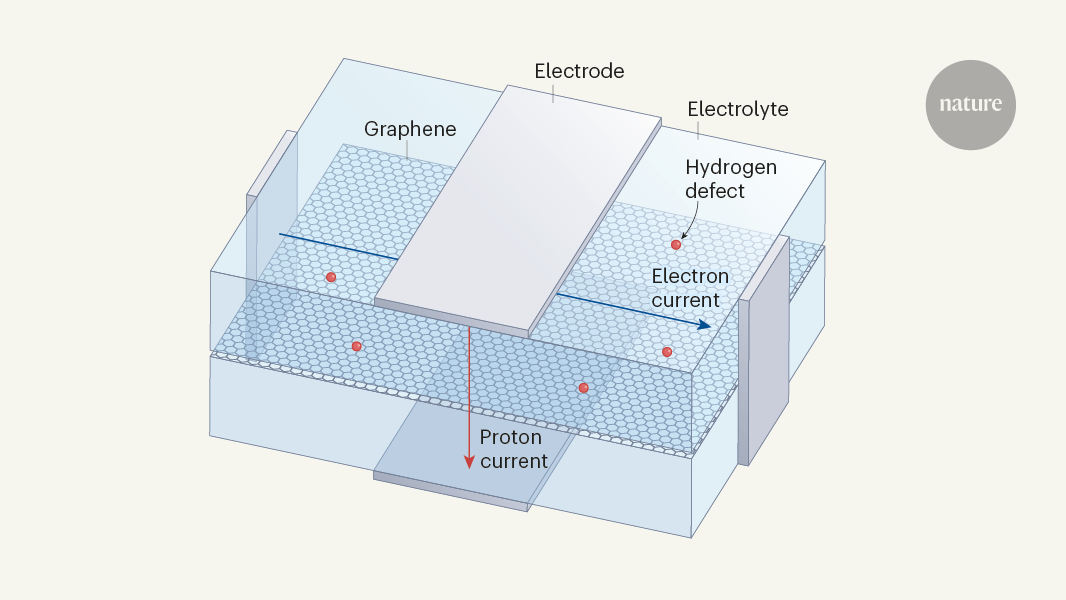Graphene's Dual Functionality: Enabling Simultaneous Logic and Memory Operations in a Single Device
The content discusses how graphene, a thin sheet of carbon atoms, can be utilized to combine computer logic and memory functions in a single device. Graphene typically behaves like a metal, with its electrons moving freely in the plane of the sheet, forming a dense cloud that prevents other particles and ions from passing through. However, an electric field can enable protons to permeate the graphene sheet, from top to bottom, turning it into a kind of sieve.
When protons bind to the electrons in the graphene cloud, they create defects that scatter the remaining electrons as they flow through the sheet, similar to an unregulated traffic intersection. The key insight is that by taming these protons and electrons, it is possible to generate two independent currents within the graphene device, enabling the simultaneous execution of logic and memory operations.
This dual functionality of graphene, where it can be used for both logic and memory, represents a significant advancement in the field of computer architecture and device design. The ability to integrate these two critical components in a single material could lead to more efficient, compact, and versatile computing systems.
Customize Summary
Rewrite with AI
Generate Citations
Translate Source
To Another Language
Generate MindMap
from source content
Visit Source
www.nature.com
Graphene combines computer logic and memory in a single device
Key Insights Distilled From
by Manu Jaiswal at www.nature.com 06-19-2024
https://www.nature.com/articles/d41586-024-01642-z
Deeper Inquiries
